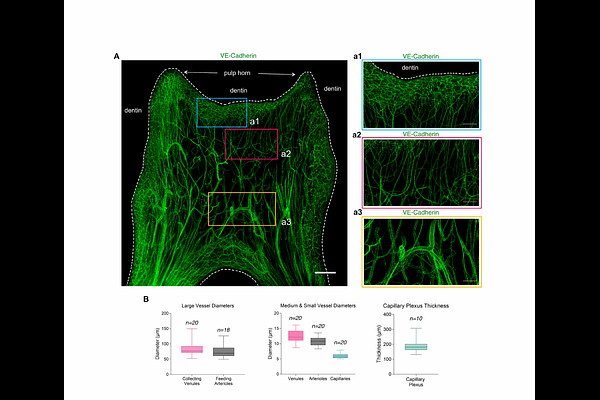Volumetric imaging and single-cell RNAseq atlases identify cellular mechanisms of human dental pulp response during tooth decay progression

Volumetric imaging and single-cell RNAseq atlases identify cellular mechanisms of human dental pulp response during tooth decay progression
Ha, H. T.; Kosmynina, S.; Verocq, A.; Ozen, K.; Tekia, I.; Bussy, H.; Sabbah, D.; Goemans, C.; Vandenbempt, V.; Gurzov, E. N.; Singh, S. P.; Baeyens, N.
AbstractDental pulp responses to dental decay, the most prevalent chronic disease worldwide, involve remodeling processes similar to those observed in other human pathological conditions. By integrating volumetric imaging and single-cell analysis across different disease stages in human samples, we uncovered the natural history of dental pulp responses to decay. At early stages, we observed an arterialization of the capillary networks and progressive outward remodeling of the larger vessels. Neurogenesis of nerve endings and the reprogramming of perivascular progenitor cells into fibroblasts are also observed, initiating the physiological reparative response of the stroma. Pathological angiogenesis and nerve regression combined with dental pulp fibrosis at later stages of tooth decay determine irreversible pulpitis. These results provide a basis for understanding dental tissue response to injury, driving a paradigm shift in patient management.